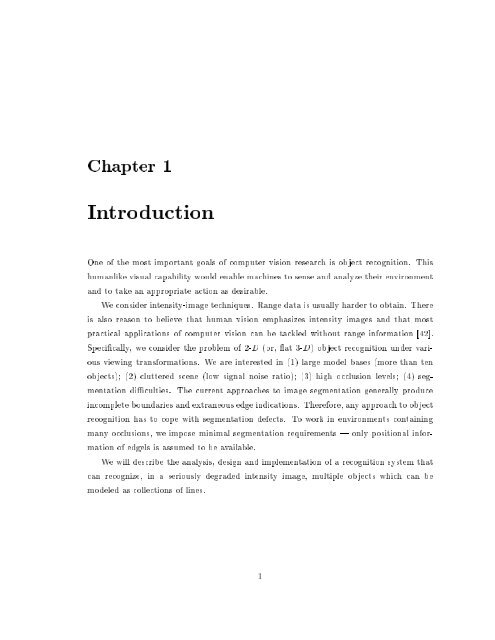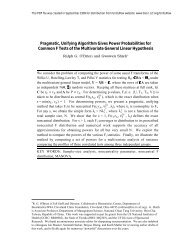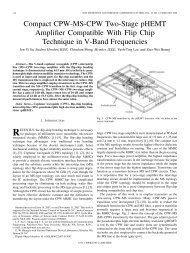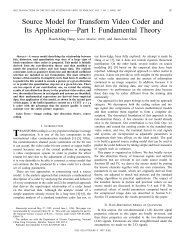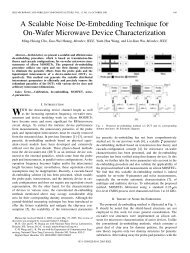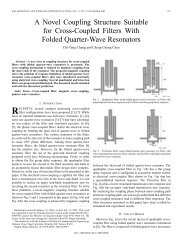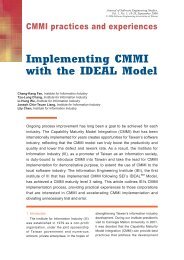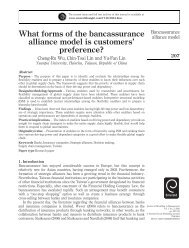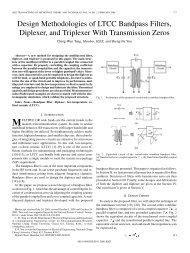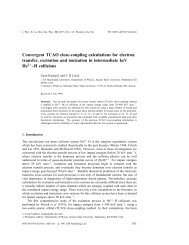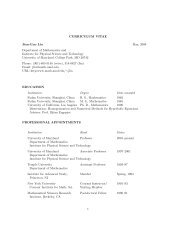A Probabilistic Approach to Geometric Hashing using Line Features
A Probabilistic Approach to Geometric Hashing using Line Features
A Probabilistic Approach to Geometric Hashing using Line Features
You also want an ePaper? Increase the reach of your titles
YUMPU automatically turns print PDFs into web optimized ePapers that Google loves.
Chapter 1<br />
Introduction<br />
One of the most important goals of computer vision research is object recognition. This<br />
humanlike visual capability would enable machines <strong>to</strong> sense and analyze their environment<br />
and <strong>to</strong> take an appropriate action as desirable.<br />
We consider intensity-image techniques. Range data is usually harder <strong>to</strong> obtain. There<br />
is also reason <strong>to</strong> believe that human vision emphasizes intensity images and that most<br />
practical applications of computer vision can be tackled without range information ë42ë.<br />
Speciæcally, we consider the problem of 2-D èor, æat 3-Dè object recognition under various<br />
viewing transformations. We are interested in è1è large model bases èmore than ten<br />
objectsè; è2è cluttered scene èlow signal noise ratioè; è3è high occlusion levels; è4è segmentation<br />
diæculties. The current approaches <strong>to</strong> image segmentation generally produce<br />
incomplete boundaries and extraneous edge indications. Therefore, any approach <strong>to</strong> object<br />
recognition has <strong>to</strong> cope with segmentation defects. To work in environments containing<br />
many occlusions, we impose minimal segmentation requirements | only positional information<br />
of edgels is assumed <strong>to</strong> be available.<br />
We will describe the analysis, design and implementation of a recognition system that<br />
can recognize, in a seriously degraded intensity image, multiple objects which can be<br />
modeled as collections of lines.<br />
1


